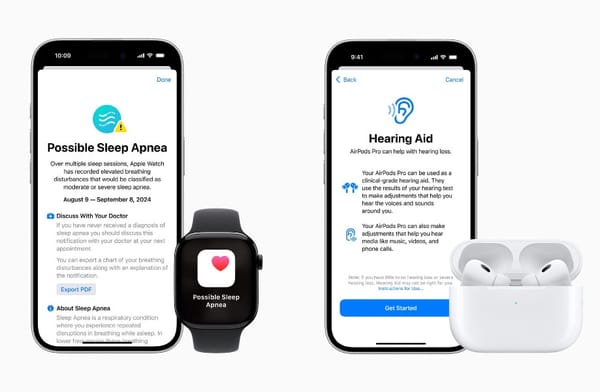In a groundbreaking development for nutritional science, a Brigham Young University (BYU) dietetics professor has harnessed the power of artificial intelligence to create the first national glycemic index database for the United States. This innovative project not only provides valuable insights into the quality of carbohydrates consumed across the country but also paves the way for more personalized and effective dietary recommendations.
The Pioneering Research
Professor Karen Della Corte, a nutrition and dietetics expert at BYU, has successfully developed a comprehensive national glycemic index and glycemic load database. This groundbreaking work, published in the prestigious American Journal of Clinical Nutrition, offers unprecedented insights into the evolving quality of carbohydrates consumed in the United States[3].
The glycemic index (GI) is a crucial tool used by public health researchers to categorize carbohydrates based on their quality. It measures how quickly specific foods can raise blood sugar levels, with higher GI foods potentially having negative impacts on metabolic health[3]. The glycemic load (GL), on the other hand, takes into account both the quality and quantity of carbohydrates consumed.
Leveraging AI for Nutritional Analysis
What sets Professor Della Corte's research apart is the innovative use of artificial intelligence in creating this comprehensive database. Collaborating with her husband, Dennis Della Corte, a professor of physics and astronomy at BYU, they developed an AI-enabled model that analyzed foods from the National Health and Nutrition Examination Survey (NHANES)[3].
This AI model efficiently matched the analyzed foods to their corresponding glycemic index and load levels, a process that would have been incredibly time-consuming if done manually. The use of AI allowed for the analysis of carbohydrate intake from nearly 10,000 foods, a task that would have taken months without this advanced technology[3].
Implications for Public Health
The creation of this national glycemic index database has significant implications for public health and nutritional research:
- Improved Understanding of Carbohydrate Quality: The database provides a comprehensive overview of the quality of carbohydrates consumed across the United States, offering valuable insights for nutritionists, dietitians, and policymakers[3].
- Disease Prevention: Large-scale studies have shown that diets high in GI and GL are associated with increased risks of type 2 diabetes, cardiovascular disease, and certain cancers. This database can help in developing targeted interventions to mitigate these risks[3].
- Weight Management: High-GI foods have been linked to quicker hunger onset and increased caloric intake, contributing to weight gain. The database can aid in developing more effective weight management strategies[3].
- Personalized Nutrition: With this detailed information, healthcare professionals can provide more tailored dietary advice based on an individual's specific needs and health goals.
- Public Health Guidelines: The database could potentially influence future public health guidelines and dietary recommendations, emphasizing the importance of carbohydrate quality in addition to quantity[3].
Key Findings from the Study
Professor Della Corte's research revealed several important trends in carbohydrate consumption over the past two decades:
- Top Glycemic Load Contributors: The study identified soft drinks, white bread, rice, and fruit juice as the primary contributors to high glycemic load in American diets[3].
- Age-Related Trends: As people age, they tend to make healthier carbohydrate choices, opting for foods lower on the glycemic index[3].
- Socioeconomic Factors: Individuals with higher education levels and incomes are more likely to consume foods lower on the glycemic index[3].
- Demographic Variations: The study found that Black adults tend to have higher glycemic indexes and loads in their diets, and women often have higher levels than men[3].
Practical Applications of the Glycemic Index
Understanding the glycemic index can help individuals make more informed food choices. Professor Della Corte suggests creating a "glycemic index-friendly zone" in your pantry by incorporating the following items:
- Whole grains
- Beans and lentils
- Chickpeas
- Brown or wild rice
- Quinoa
- Barley
- Steel-cut or rolled oats
- Non-starchy vegetables
- Fruits
- Nuts[3]
By focusing on these lower GI foods, individuals can help stabilize their blood sugar levels and potentially improve their overall health.
The Future of Nutritional Research
The creation of this AI-powered glycemic index database marks a significant advancement in nutritional research methodology. Professor Della Corte believes that this database will open up new avenues for investigating the role of glycemic index and glycemic load in chronic disease risk in the United States[3].
The use of open AI for creating the GI database demonstrates the potential for artificial intelligence to accelerate and enhance nutritional research. This innovative approach could lead to more rapid advancements in our understanding of diet-related health issues and the development of more effective nutritional interventions.
Importance of Low-Glycemic Carbohydrates
One of the key takeaways from this study is the importance of prioritizing low-glycemic carbohydrates in the diet. Professor Della Corte emphasizes focusing on whole, minimally processed foods that release glucose slowly into the bloodstream, preventing spikes in blood sugar levels[3].
Making simple swaps, such as choosing whole grains over refined grains, can significantly improve the healthfulness of one's diet and lower the overall dietary glycemic index. This approach not only helps in managing blood sugar levels but also contributes to overall health and well-being.
Challenges and Limitations
While the creation of this national glycemic index database is a significant step forward, it's important to note that the glycemic index is just one factor to consider in a healthy diet. Other factors, such as overall nutrient content, portion sizes, and individual metabolic responses, also play crucial roles in determining the health impact of foods.
Additionally, the glycemic index can vary based on factors such as food preparation methods, ripeness of fruits, and individual differences in digestion and metabolism. Therefore, while this database provides valuable general guidance, personalized nutritional advice should still take into account individual factors and overall dietary patterns.
Conclusion
The development of the first national glycemic index database using artificial intelligence represents a significant milestone in nutritional science. Professor Karen Della Corte's innovative research at BYU has provided a powerful tool for understanding and improving the quality of carbohydrates consumed in the United States.
This database not only offers valuable insights into current dietary trends but also has the potential to inform future public health guidelines, enhance personalized nutrition strategies, and contribute to the prevention of chronic diseases. As we continue to unravel the complex relationships between diet and health, tools like this AI-powered database will play an increasingly important role in shaping our understanding of nutrition and guiding us towards healthier dietary choices.
The intersection of artificial intelligence and nutritional science demonstrated in this project opens up exciting possibilities for future research and innovations in the field. As we move forward, it's clear that technology will continue to play a crucial role in advancing our understanding of nutrition and its impact on health, ultimately leading to more effective strategies for promoting well-being and preventing disease.
Citations:
[1] https://www.healthline.com/nutrition/glycemic-index
[4] https://medlineplus.gov/ency/patientinstructions/000941.htm
[5] https://www.webmd.com/diabetes/glycemic-index-good-versus-bad-carbs















Member discussion